Earlier in the day we reported that many visitors were unable to identify standout work at the Armory, despite the buoyant atmosphere. In this post we identify why: Very few works actually stood out. Looking back at the hundreds of photographs we took during our visit, we have very little to say about the work we saw. Thus, our slideshow provides an overall impression of a relatively bland fair, with few high points or low points along the way.
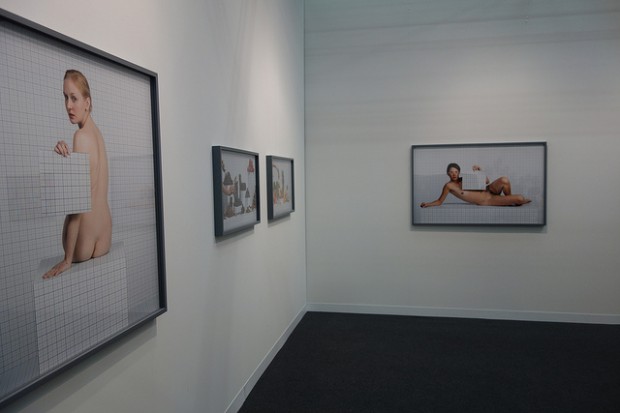
This Charlie White male nude rests on a ledger paper gridding. The result is an image that at once looks like it is about plotting points on a graph, but may also simply serve as an aesthetic device. The still life below also uses the patterning.
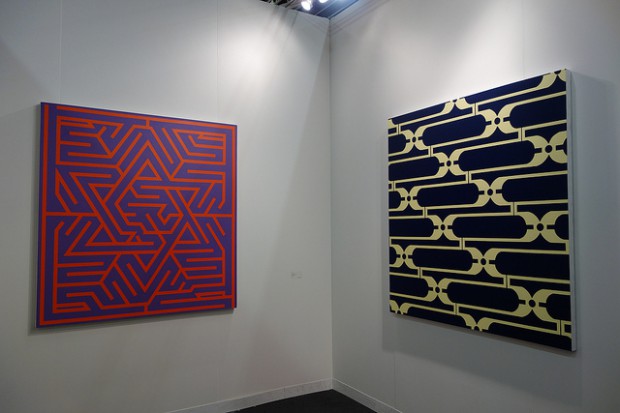
Xu Qu at Tang Contemporary uses his interest in power, religion, and politics as a starting point for his paintings. The painting on the left references the star of David, while the one on the right shows a microscopic view of the often unnoticed patterning on Chinese bills. Their content all but disappears behind a wall of formalism here, which at an art fair seems par for the course.
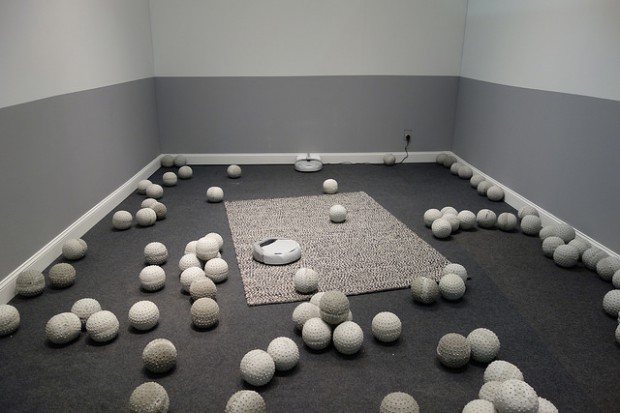
Two Roombas tour a floor littered with what appears to be dustball grenades and a carefully placed carpet. Artist Nadim Abbas’s biography talks about how he’s interested in trauma embedded in the everyday, which in this case appears to be a never-ending supply of Roomba-proof dustballs. Available at Gallery Exit.
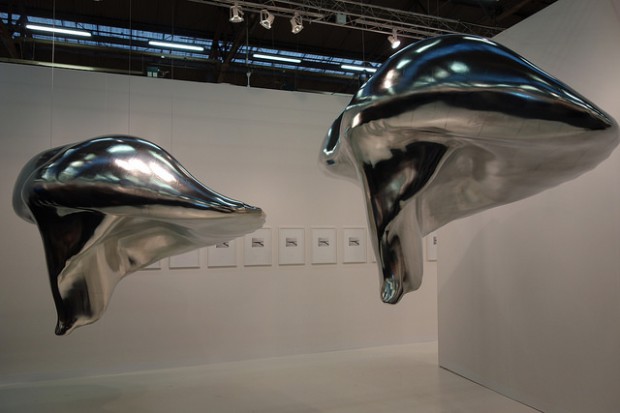
What would happen if Brancusi’s “Birds of Space” was dropped into outer space only to re-enter the earth’s atmosphere? The question is of absolutely no consequence, but Inigo Manglano Ovalle at Christopher Grimes Gallery set out to answer it anyway; he was helped out by the U.S. Air Force’s hyper-velocity wind tunnel at the Arnold Engineering Development Center in Silver Springs, Maryland. The result is two shiny dollops of metal. Glad that mystery was solved.
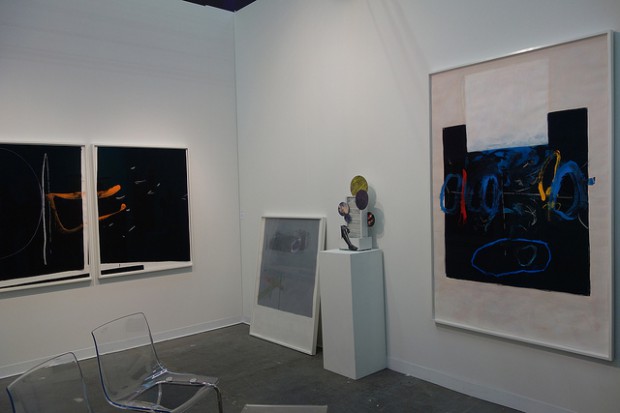
Toronto-based artist Scott Treleaven works almost exclusively on paper, but his water-fountain-cum-collage was the standout piece in the Invisible Exports booth. What does it all mean? It’s hard to say with largely abstract work, but we like that it stands apart from most abstract work being made these days. The movement and seriality of the work seems cinematic.
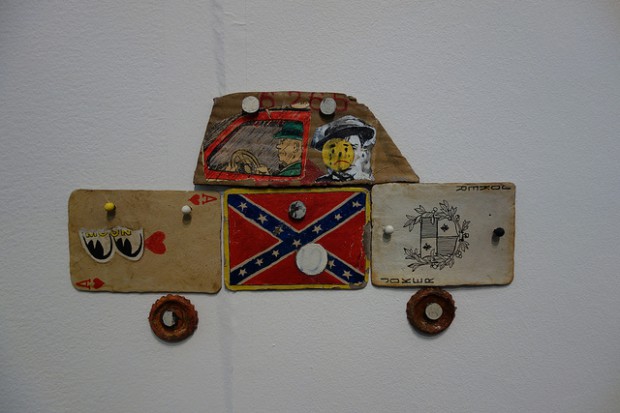
Zach Feuer had a number of smaller wall-based works on display by Kristen Morgin. All were made from clay, but painted to resemble other items. Here, what looks like used cards, bottle caps, and a piece of cardboard create an image of a sad passenger in a taxi. The rear of this car is being held up by the joker, which may be the source of this man’s despair; in card games, jokers are often useless.
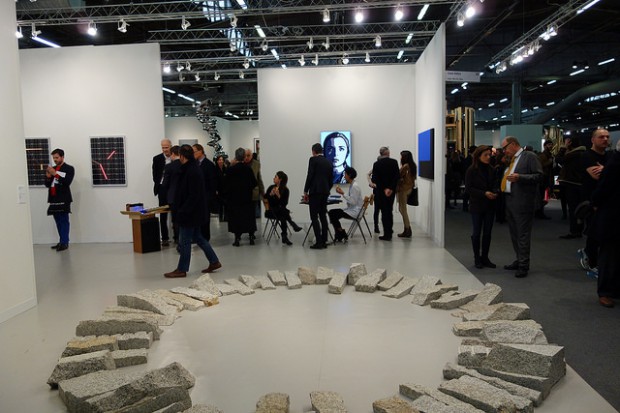
Almost forgotten at the art fair this year is Julian Opie, the artist best-known for his figurative light box animations. He’s situated this year behind a ring of stones at Lisson Gallery.
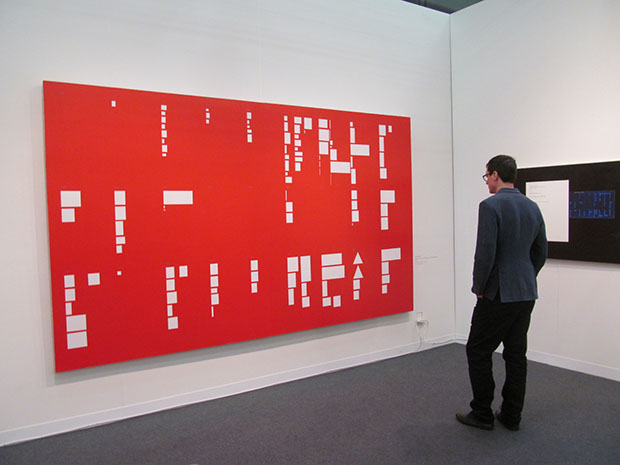
David Diao’s series of “Barnett Newman” paintings at Postmasters will soon look familiar to those clued into the 2014 Whitney Biennial. A series of dark green panels, similarly chronicling and categorizing the scale of Newman’s work, are on view on the Whitney’s fourth floor. Postmasters’ mid-size booth is full of several artists from the gallery, but the gallery’s co-owner Magda Sawon specifically referred to this large Diao on the back wall as the booth’s “anchor.”
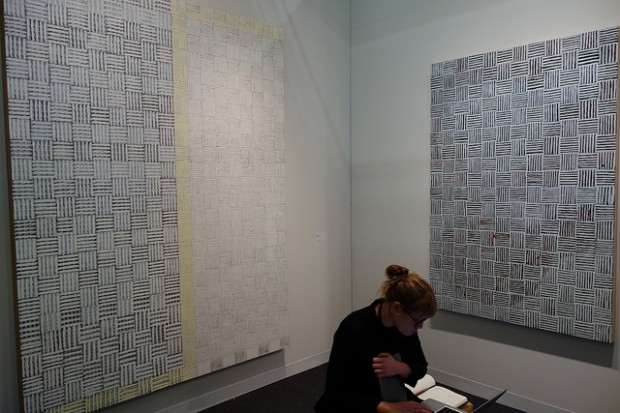
At Kavi Gupta: Theaster Gates, “Horizontal Tar Read from Left to Right,” 2014. These works look a little generic to us, but that’s always been the case with Gates. The work’s always been a way to fund his performances and urban planning work, which are much more significant.
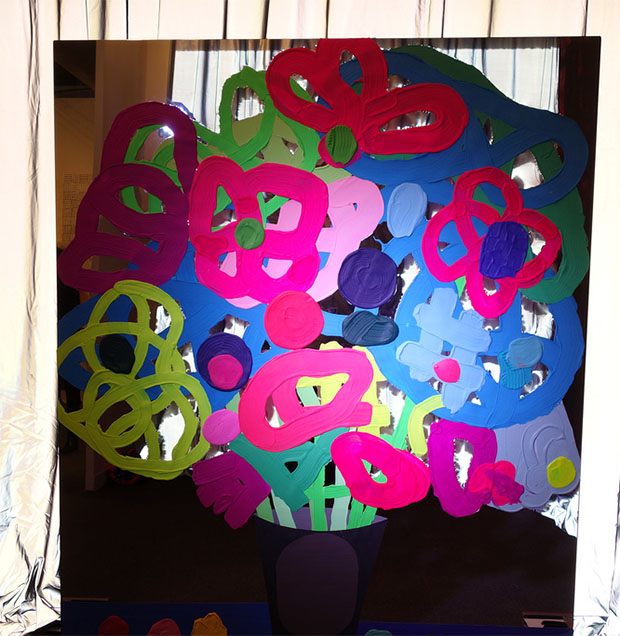
In another part of the Kavi Gupta booth, Jose Lerma assembled two works that should be viewed together: “Mrs. Vodden’s Flowers,” the mirrored painting, and “Dolores Misma,” the silver curtain behind it. If you take a photograph with the flash open, then an effect occurs that whites out the curtain. This same effect was created earlier this year at Lerma’s solo show at the MCA.

The title of Jumana Mana’s sculpture “GM 15107569/Model #H02-08” refers to the seat belts used to make her monument to cars of years past. Paintings by Tomory Dodge hang and lean against the back wall of CRG Gallery’s booth.
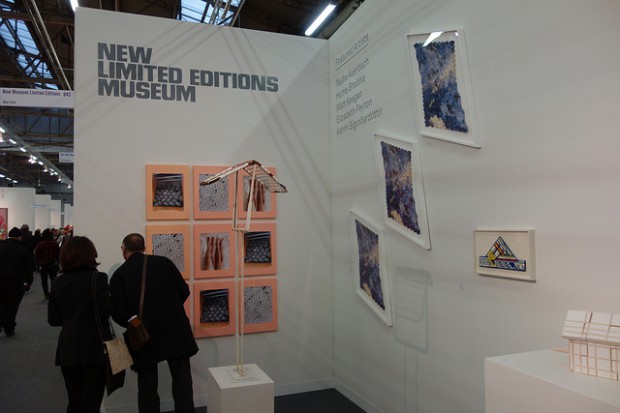
The New Museum was one of just seven non-profits represented at the fair; they brought several limited-editions, the most recent by Tauba Auerbach (three are hung on the right) whose series includes origami-folded print-outs of JPEGs. The other non-profits at the fair included Aperture Foundation, For-Site Foundation, K11 Art Foundtation, Sifang Art Museum, Whitechapel Gallery, and the Ullens Center for Contemporary Art.

Double Fly Art Center, a collective of nine male Chinese artists, brought a “Games Playground” to the Space Center booth. Those games included a ring toss, and shooting game where you’d win the objects you hit. Many of those “prizes” were altered versions of street tchotchkes—like a plastic toy cut in half with some paper stuck to it. This was one of the more interactive works in the show, but with a game cost of $50 per play, we’re not sure how they’ll make their booth costs back.
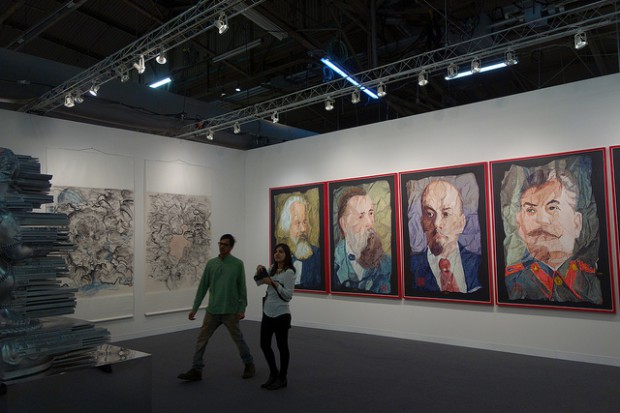
At Tianrenheyi Art Center we saw some of the Focus section’s more overtly political works, made none the clearer by Jin Feng’s “Socialist Leaders: From Marx to Mao,” 2013, showing crumpled-up versions of the world’s former leaders. The message that these leaders, like the paper, might be tarnished in some way is a little heavy handed for our taste.

Yuan Gong’s “Yuan Ming Yuan #6” and “Yuan Ming Yuan #11” have such a glossy sheen because they’re made out of Ferraris. Yes, you read that right. On view in Tianrenheyi Art Center’s Armory Focus booth.

He Xiangyu at Whitespace. It’s hard to tell from this photo, but there’s an egg resting inside that strip of waffle carton. I actually found this deeply unsettling, perhaps simply for fear that the egg would fall. It’s hard to know what this should mean to any assessment of its quality.
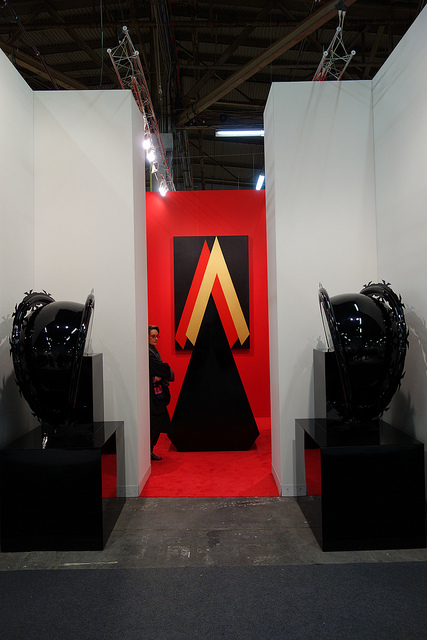
Zhang Ding’s “Orbit” installation (for Galerie Krinzinger and ShangHART) consisted of two starry, lacquered sculptures guarding the booth’s small entrance. Inside the red-carpeted booth you had the sense of being in a monastery of some sort—with a sharp, almost ritualistic object planted firmly in the center. Though what that ritual might be, it was hard to tell.

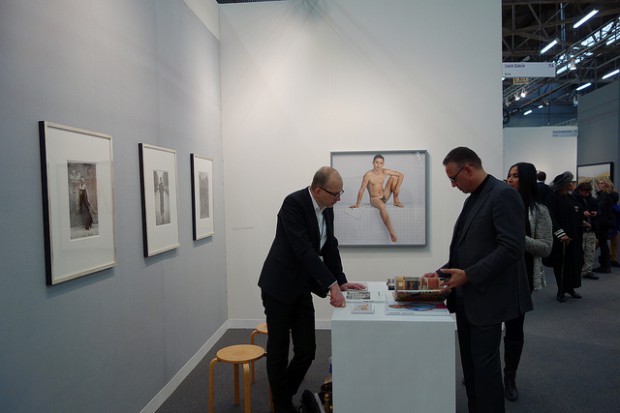
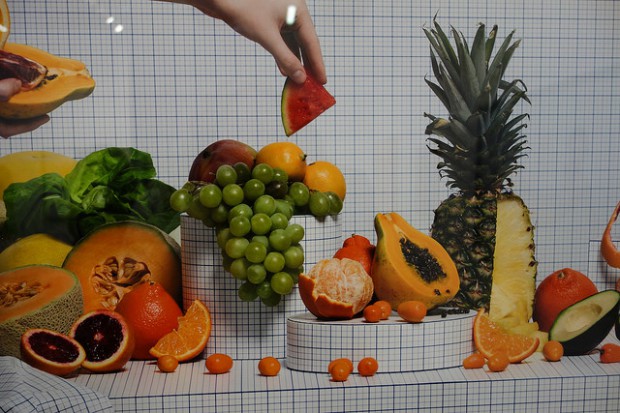

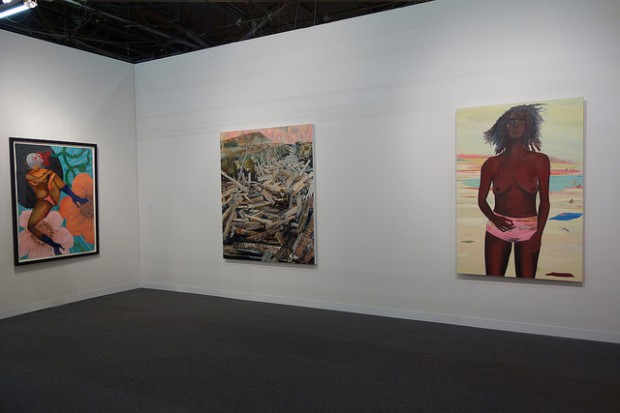
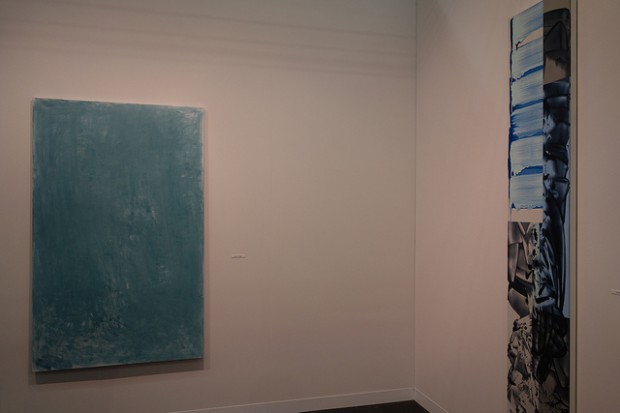


{ 1 comment }
Kristen Morgin’s work is not made with bottle caps, cardboard and cards. All of it is handmade from unfired clay and painted to portray the illusion of those items.
Comments on this entry are closed.